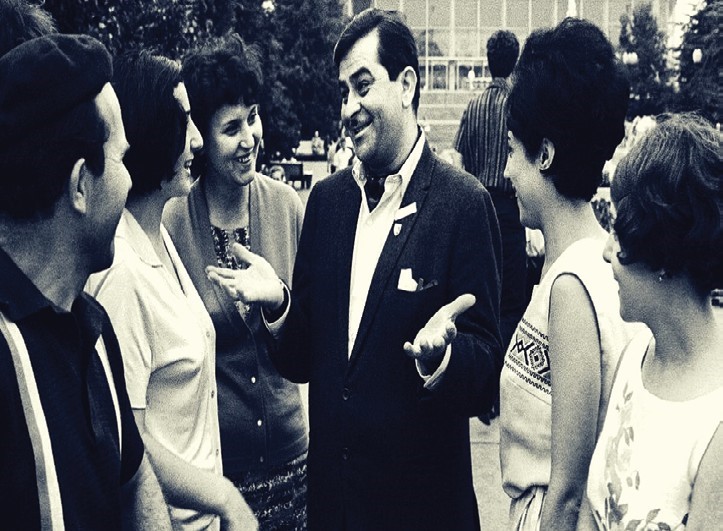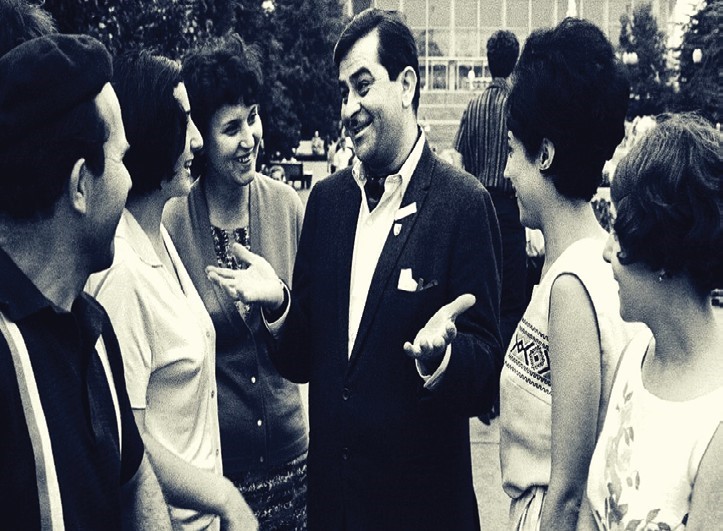Cinema is one of the most effective ways to create change and Indian cinema, since its onset, has been a trailblazer. Among the many icons of Indian cinema, a few traversed political and geographical boundaries and popularised it across borders. With it, they ensured India’s rich culture and heritage propagated in new lands too.
Cinema is not only an art, it’s an important link that connects Indians the world over, especially helps the diaspora to stay connected to their origins. It was filmmaker Raj Kapoor, India’s first cultural ambassador from the world of cinema, who sent ripples across the world with his contributions to cinema. His films beautifully narrated stories of the common man in India and also helped bridge gaps with other cultures. He was a showman in the truest sense of the word.
The power of cinema
Indian cinema is a force to reckon with, it being the biggest film industry in the world. India produces more than 1,800 movies in a year through the major centres of film production that include Mumbai, Hyderabad, Chennai, Kolkata, Amritsar, Kochi, New Delhi, Bangalore, Bhubaneshwar-Cuttack and Guwahati.
India ranked first in terms of annual film output in 2018 and the Indian film industry is a multi-billion dollar industry. Of this, the Hindi film industry makes up for the biggest contributor with 44 per cent of the box office revenue. This is followed by Tamil and Telugu film industry that offer 13 per cent each to the box office revenue. This is then followed by other regional film industries including Malayalam, Kannada, Bengali, Punjabi, Marathi, etc.
However, in 2021, Telugu cinema became the largest film industry of India in terms of box-office. Tollywood, as it’s popularly known, churned out 180 films in 2021 generating Rs 1070 crore (gross) in terms of revenue.
Today, Indian cinema has a global presence and being a global enterprise, Indian actors, filmmakers, etc. have a fan base spread across nations, in more than 90 countries worldwide. The revenue generated from films screened overseas is as much as 12 per cent and is only growing. Indian cinema’s global presence could not have been possible without the early contributions of legendary filmmakers such as Raj Kapoor whose works had a global appeal.
The initial years of the filmmaker
Born as Shrishti Nath Kapoor on 14 December 1924, Raj Kapoor, also known as Ranbir Raj Kapoor, was an actor, film director and producer who worked in Hindi film industry. His parents Prithviraj Kapoor and Ramsarni Devi Mehra had six children of which Raj was the eldest. The family moved from Peshawar, North-West Frontier Province to Bombay Presidency for residence and for education.
In his early years of the career, Prithviraj Kapoor moved very often from one city to another. As a result, Raj Kapoor attended different schools that included Colonel Brown Cambridge School in Dehradun, St Xavier’s Collegiate School in Calcutta and Campion School in Bombay. That went a long way in moulding his personality and understanding of cultures and people.
Interestingly, Raj Kapoor’s entire family was an illustrious one. His father’s younger brother Trilok Kapoor was an actor and father’s cousin was film producer Surinder Kapoor whose children are producer Boney Kapoor and actors Anil Kapoor and Sanjay Kapoor. Raj Kapoor’s brothers were famous Hindi film industry actors Shammi Kapoor and Shashi Kapoor. The legacy of Indian cinema’s ‘first family’ continues with actors Rishi Kapoor, Kareena Kapoor, Karishma Kapoor, Ranbir Kapoor, etc. And, all have been India’s cultural ambassadors in their own unique way.
The evergreen works of Raj Kapoor
Raj Kapoor started his creative journey at an early age and that too with aplomb and confidence. At the young age of 24, Raj Kapoor produced, directed and acted in film Aag that was released in 1948. Before that, he had acted in Neel Kamal with Madhubala and the film was released in 1947.
With Aag, Raj Kapoor had established his own studio, the now world-famous R. K. Films. The film starred Nargis, Kamini Kaushal, Premnath and Raj himself. His first big success as producer, director and actor came with Barsaat that was released in 1949 and starred Nargis. The film is a classic and woos audiences worldwide, even today.
During his career, Raj Kapoor honed several talents across spheres of cinematic works. These include singer Mukesh, music composers Shanker-Jaikishan, lyricists Shailendra and Hasrat Jaipuri, etc. He had an uncanny ability to extract the best out of every artist he worked with.
Raj Kapoor made films that were ahead of their time and often touched upon prevailing social ills of the time. In that sense, he played the role of a social reformer as well. Many of his films had an undertone of social consciousness and he used the medium of cinema very well in highlighting social changes of the time, such as declining human values, increasing consumerism, etc.
Many of his films had a patriotic storyline. The film Jis Desh Men Ganga Behti Hai was a celebration of a new India, a young India that had just become free. He inspired many filmmakers over the years and his films kept the patriotic fervour in Indians alive.
Influenced by Charlie Chaplin, many of his works had glimpses of the great comedian, especially in films such as Shree 420, Awaara, etc. The characters he played in these films were hugely inspired by Charlie Chaplin – cheerful and honest even in the face of adversities.
The global appeal of his works
Almost all of Raj Kapoor’s films had a global appeal and were popular with audiences across borders. His films were commercial successes in many parts of South, Central and Southeast Asia, China, the-then Soviet Union, Europe, Africa and the Middle East. The song ‘Awara hoon’ became very popular not just in India but in several nations across the world.
His film Shree 420’s famous song Mera Joota Hai Japani, Ye patloon Inglistani, Sar pe lal topi Roosi, Phir bhi dil hai Hindustani was an extremely popular song. In fact, at the 2006 Frankfurt Book Fair, Indian author Mahasweta Devi used these lyrics to express her gratitude towards her motherland, India.
Raj Kapoor’s films had a massive fan following in Russia, then Soviet Union. The love for his films was also a reminder of India’s relations with Russia. In fact, the unparalleled popularity and love that Raj Kapoor and his films received in Russia were a testimony of Indian cinema’s global presence and appeal. Many in Russia believe that it was Raj Kapoor’s films that actually introduced India to the Russians. Even today, after generations, the young Russians know about Raj Kapoor and his films.
For his immense contribution to Indian cinema and for playing the role of a cultural ambassador, Raj Kapoor received numerous accolades that included many National Film Awards, Filmfare Awards, etc. in India.
The Government of India awarded him the Padma Bhushan in 1971 and Dadasaheb Phalke Award in 1987. His performance in Awaara was ranked as one of the top ten greatest performances of all time in world cinema by Time magazine.
Often referred to as the ‘Greatest Showman of Indian Cinema’, Raj Kapoor lived by his motto ‘The Show Must Go On’. He dedicated his life to making films that touched people’s hearts all over the world and made Indian cinema an indispensable tool of cultural diplomacy.


 Raj Kapoor, India’s first cultural ambassador from the world of cinema during his visit to Russia
Raj Kapoor, India’s first cultural ambassador from the world of cinema during his visit to Russia